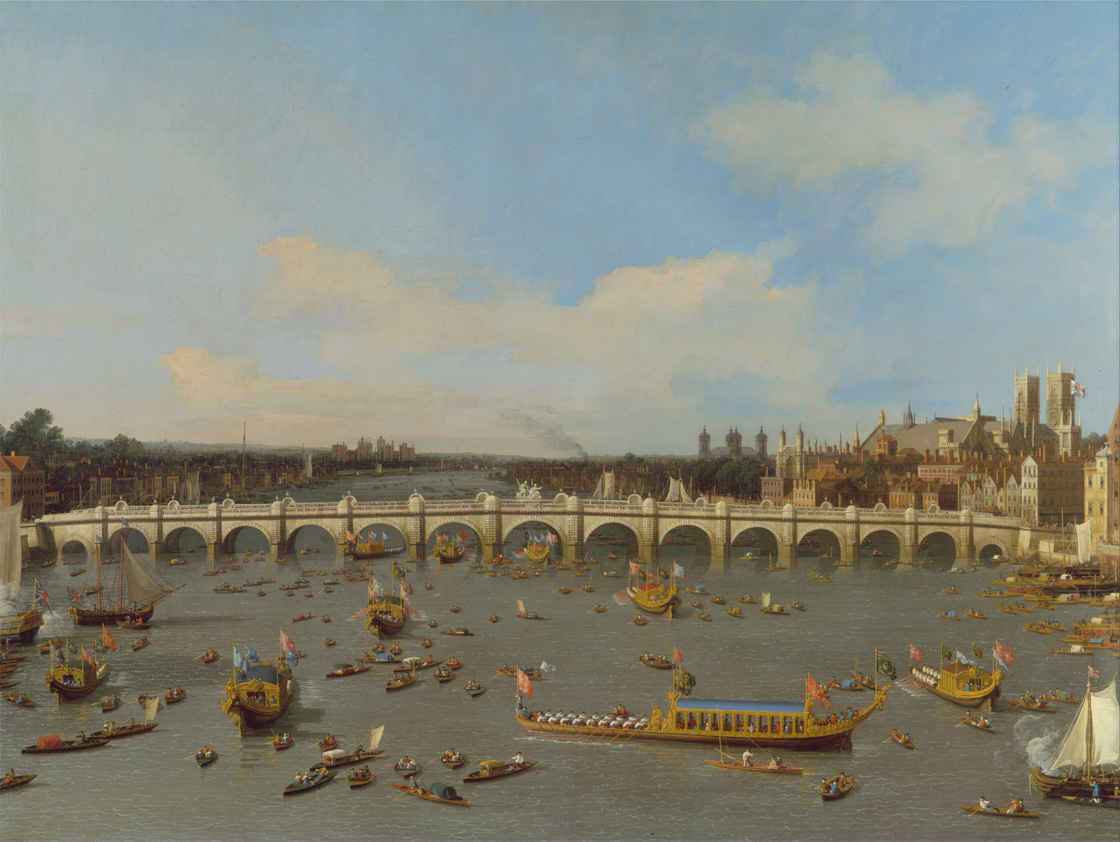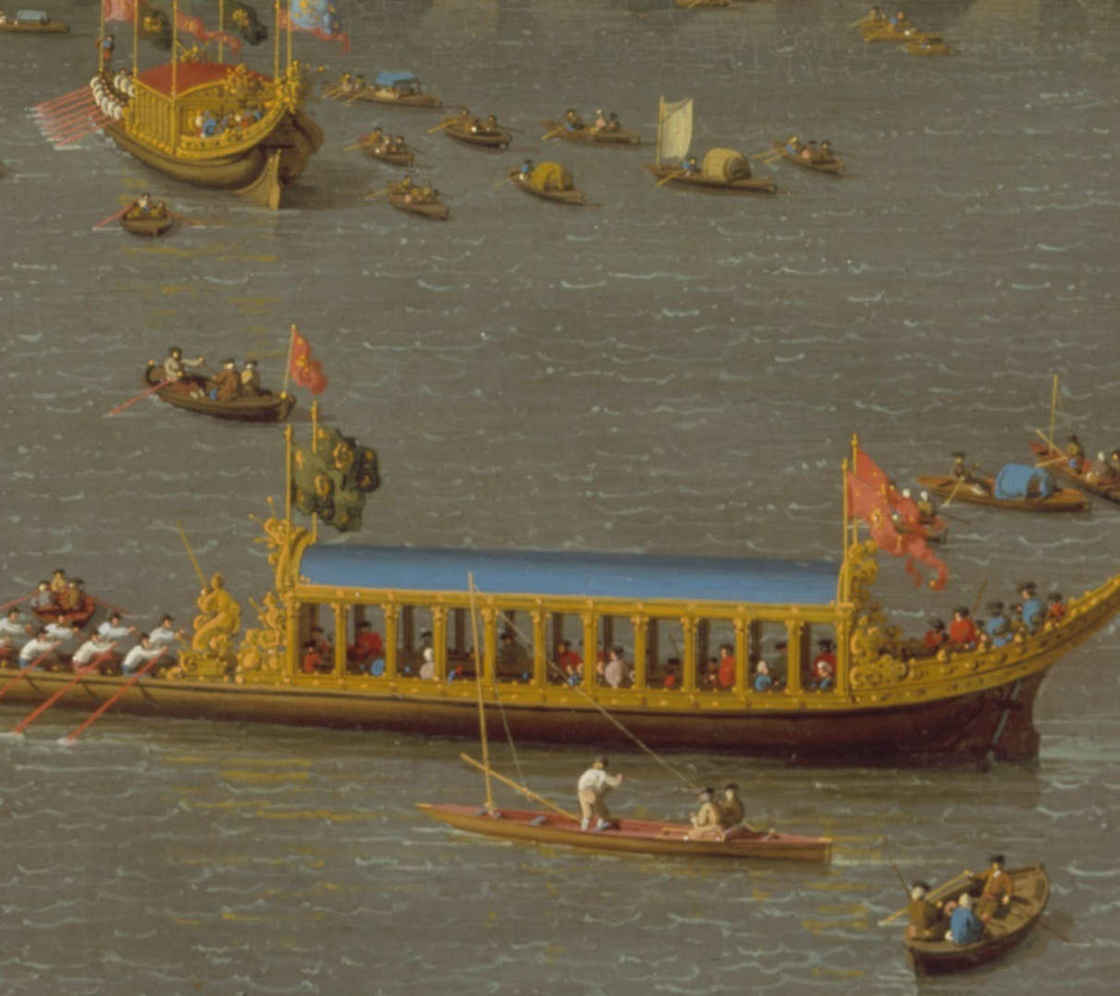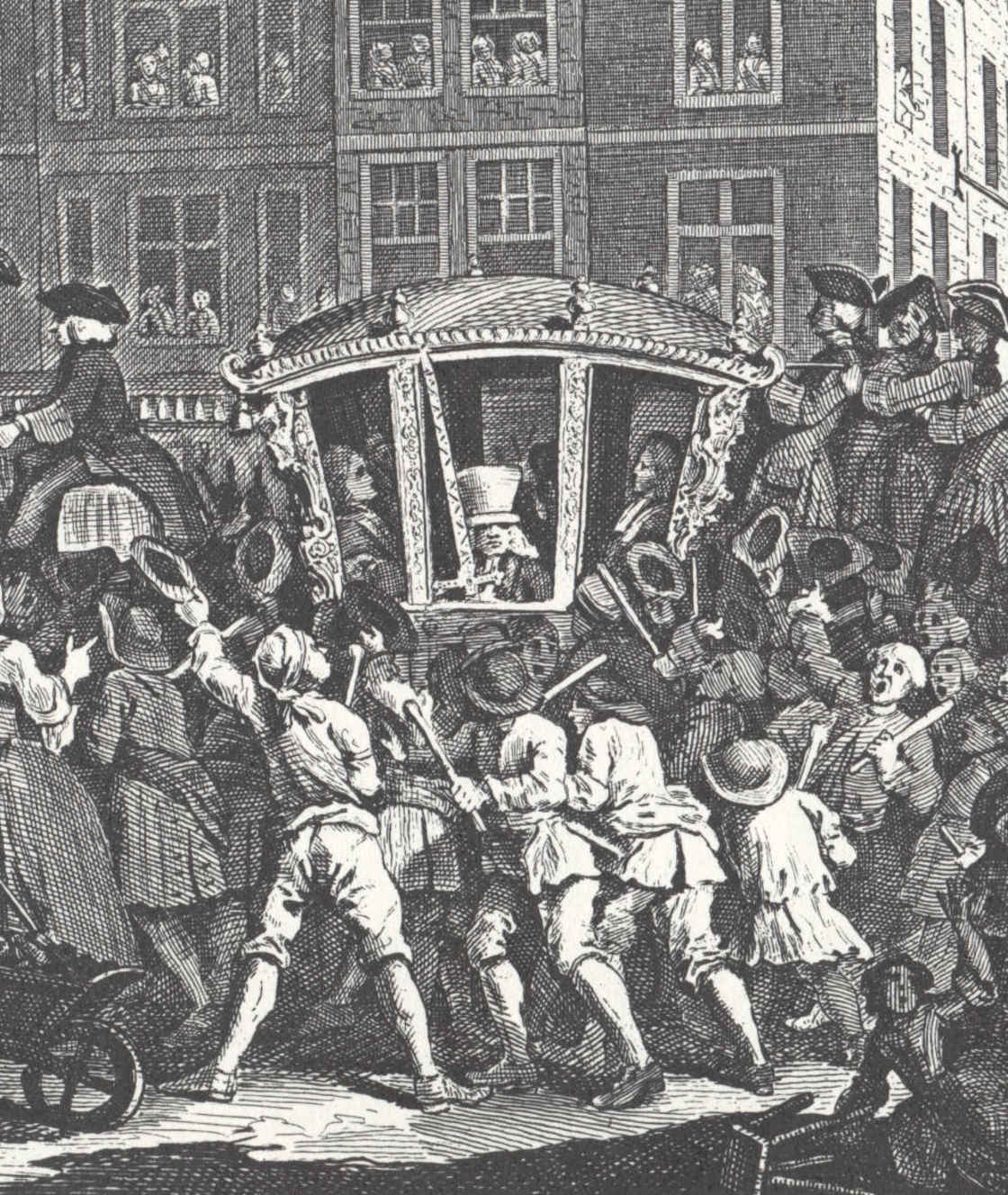The Show in Art and literature
History of the Lord Mayor’s Show The Show in Art and literature
There have been countless paintings and drawings of the Lord Mayor's Show - more than we can possibly include here - but two very different images stand out, and as it happens they were both created in 1747: one by Canaletto and the other by Hogarth. These were two of the finest artists of their day, and represent the apotheosis of eighteenth century English and Italian painting.
Canaletto's painting is one of five he painted of the Show, and depicts the eighteen-oared State Barge , as well as the twelve-oared barges of a number of Livery companies. Three sailing ships fly the Union Jack, and plumes of smoke can be seen trailing across the water indicating that salutes have just been fired.
The painting is an idealisation of London and The Show, taking an imaginary viewpoint high above the Thames. It presents a vista so broad it could not be taken in at one glance, but which was created by the superimposition of two separate views.
Canaletto's brilliant blue sky owes much to his native Venice, and against it is arranged the architecture of London: Lambeth Palace; Westminster Abbey; Westminster Hall, the original destination of the Show; and the four spires of St John's Smith Square, Queen Anne's footstool. But the dominating architectural feature is the new Westminster Bridge, which was not opened until two years after the painting was completed. It is shown with the statues of the river gods, Thames and Isis, over the centre span, but although planned these were never executed.
By contrast, Hogarth objected to what he called "phizmongering", the artificial prettification of people and places. London was his universe, and he showed its high life and low life with a keen and critical eye.
His 'Industry and Idleness' series is a highly moral work, illustrating the rewards which await those who choose to spend their time wisely, or to enjoy the easy virtue of London's dissolute underbelly. Two apprentices start their training together but follow entirely different paths. The Idle Apprentice is eventually hanged at Tyburn, whilst the Industrious Apprentice marries his master's daughter and becomes Lord Mayor of London, the highest position to which a commoner could aspire.
The final engraving in the series sees the Industrious Apprentice in his coach on Lord Mayor's Day, mobbed by an admiring crowd, and watched from a balcony by Frederick, Prince of Wales and Princess Augusta. He rides in a hired coach which was introduced following the incident in 1711 when the Lord Mayor fell from his horse and broke his leg; today's magnificent coach was not built until 1757.
Finally, here is Pepys reviewing the 1660 Show and grumbling about everything but the ladies and the wine:


